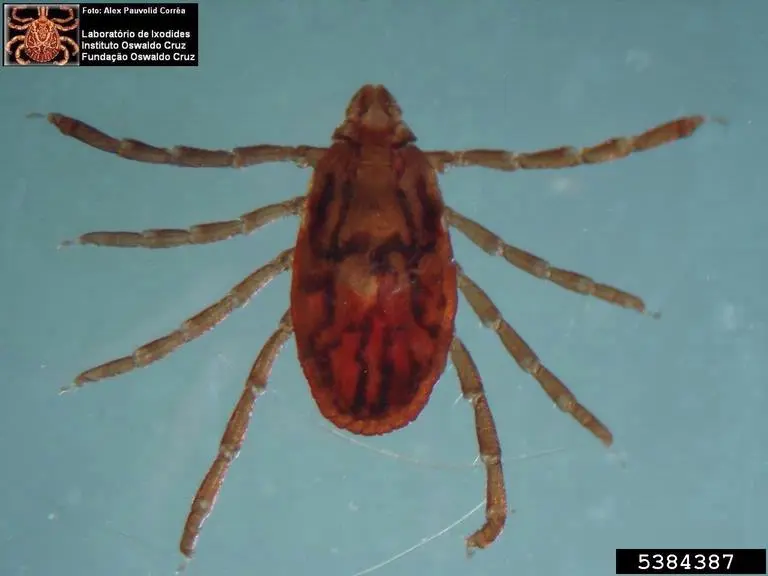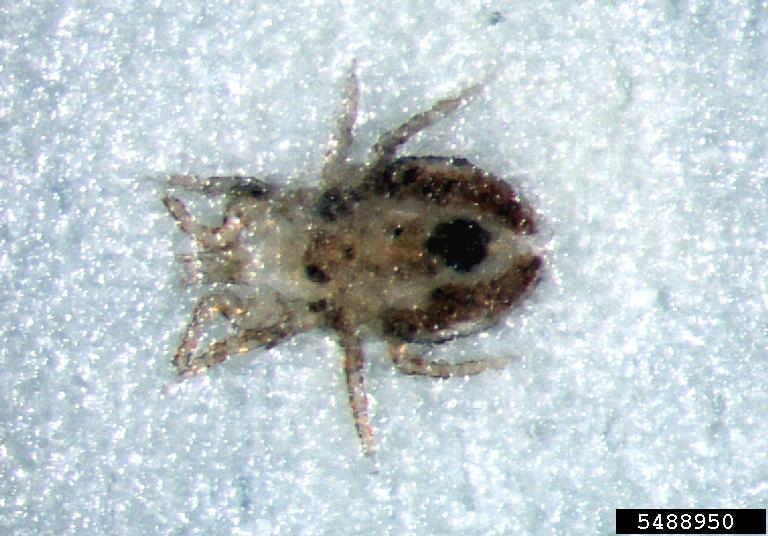Ticks Control.
Home / PESTIdentify & Get Rid Of Ticks.


Source
Invasive.orgTicks are in the arachnid order Acarina and are considered a major pest concern in the U.S. due to their ability to transmit serious diseases like Lyme disease and Rocky Mountain spotted fever.Ticks have specialized adaptations to help them detect and find their hosts, such as recurved teeth or ridges on their mouthparts, sensory pits that detect heat and carbon dioxide, and the ability to sense light, dark, shapes, shadows, and vibrations.
Types of ticks
It's important to first get educate on proper tick identification, as new mite species are constantly being discovered. Knowing the specific tick species present is crucial for determining the disease risk and implementing the right management strategies.
- There are two main types of ticks - soft ticks and hard ticks. Soft ticks feed on hosts then return periodically to a nest or shelter, while hard ticks are found on pets, cattle, wildlife, and people. In the U.S., campers, hikers, and hunters are commonly hosts for hard ticks.
- Some tick species live their entire life cycle on a single host, while others spend only the larval and nymphal stages on one host, then the adult drops off to find another. Most ticks have three different hosts, one for each life stage.
- The key hard tick species in the U.S. include the Lone Star Tick, Gulf Coast Tick, American Dog Tick, Western Blacklegged Tick, and Deer Tick/Blacklegged Tick. These ticks can transmit diseases like Rocky Mountain Spotted Fever, Lyme Disease, Anaplasmosis, and Ehrlichiosis.
Ticks have specialized adaptations to help them detect and find their hosts, such as recurved teeth or ridges on their mouthparts, sensory pits that detect heat and carbon dioxide, and the ability to sense light, dark, shapes, shadows, and vibrations. Understanding the biology and behavior of these different tick species is crucial for implementing effective management and control strategies, whether for residential, commercial, or public properties. Guide to different tick species and the diseases they carry.
Ticks on Human.
By following these best practices, you can effectively protect yourself and your family from the risks associated with tick bites and tick-borne illnesses.
- Protect against tick bites: it is crucial for you to conduct regular full-body checks, especially after spending time outdoors in areas with high tick populations. Ticks may attach anywhere on the body, but are commonly found in warm, moist areas such as the groin, armpits, and scalp.
- Tick is found attached: should be removed promptly and properly using fine-tipped tweezers. Grasping the tick as close to the skin's surface as possible and pulling straight up with steady, even pressure is the recommended technique. Avoid crushing, twisting, or jerking the tick, as this can cause the mouthparts to break off and remain in the skin.
- After tick removal: the bite site should be cleaned with soap and water or disinfected with rubbing alcohol. Customers should monitor the area for signs of infection, such as redness, swelling, or a bullseye rash, which may indicate Lyme disease. If any of these symptoms appear, they should seek medical attention immediately.
- Reduce the risk of tick-borne diseases: like Lyme disease and Rocky Mountain spotted fever, you should use insect repellents containing DEET, picaridin, or IR3535 when spending time in tick-infested areas. Wearing long pants, long sleeves, and light-colored clothing can also help make ticks more visible.
- When call professionals: Pest control professionals can also assist customers by implementing comprehensive tick management strategies, such as habitat modification, targeted pesticide applications, and educating the public on tick-bite prevention and disease symptoms. Monitoring and evaluation of these control methods are crucial for their continued effectiveness. 844-706-1321 .
Ticks on dogs
Tick bite on dogs can be very serious, as they can transmit dangerous diseases like Lyme disease, Rocky Mountain spotted fever, and ehrlichiosis. It is critical for dog owners to be vigilant about regularly checking their pets for ticks, especially after they have been in areas with high tick populations.
- When inspecting a dog for ticks : Owners should look closely at the skin, especially in warm, moist areas like the groin, armpits, and scalp where ticks often attach. Ticks may be small and hard to spot, so a thorough examination is necessary.
- Found attached to the dog's skin: should be removed promptly and properly using fine-tipped tweezers. The tick should be grasped as close to the skin as possible and pulled straight up with steady, even pressure to ensure the entire tick, including the mouthparts, is removed.
- After tick removal: the bite site should be cleaned with soap and water or disinfected with rubbing alcohol. Pet owners should monitor the area for any signs of infection, such as redness, swelling, or a bullseye rash, which may indicate the presence of a tick-borne disease. If any of these symptoms appear, the dog should be taken to a veterinarian immediately.
- Prevent tick bites and reduce the risk of disease transmission: pet owners should use pesticidal dips, washes, or dusts to treat their dogs, as directed by a veterinarian. The dog's bedding should also be washed frequently to remove any ticks or eggs. Flea and tick collars can be used, but their effectiveness can vary.
By staying vigilant, properly removing ticks, and implementing comprehensive tick management strategies, pet owners can effectively protect their dogs from the dangers of tick-borne illnesses.
What Catch Pest 365 does for get rid of ticks.
- For pet owners: We regularly check dogs and cats for ticks and use appropriate pesticide dips, washes, or dusts to treat them. Pet bedding should also be washed frequently.our Customers should evaluate the effectiveness of flea and tick collars, as results can vary.
- Around the home: keeping the grass cut short around buildings and fences, and mowing on both sides of fences, can help eliminate tick habitats. Keeping stray animals out of the yard is also important.
- Indoor areas: crack and crevice pesticide applications can be made where ticks are likely to hide, such as under the edges of rugs, furniture, baseboards, windows, and doorframes. Pets and children should be kept away from treated areas until the pesticide is completely dry. Fogging is generally ineffective for tick control.
- Outdoor areas: outdoor areas, pesticide sprays are most effective when applied to the sides of paths, low vegetation, and the base of weedy fences where rodents and ticks may reside. However, broad application of pesticides to mowed grass is not an effective tick control strategy, as white-footed mice, a primary tick host, do not typically infest lawns.
- Prevention: our technicians can also utilize pesticide-treated cotton nesting material, like the Damminix product, to target ticks on rodents. The pesticide kills the tick parasites without harming the mice. This method is most effective when placed early in the season to target the larval and nymphal tick stages.
By implementing these comprehensive tick management techniques, we help our customers effectively control tick populations and reduce the risk of tick-borne diseases around their properties. 844-706-1321 .





